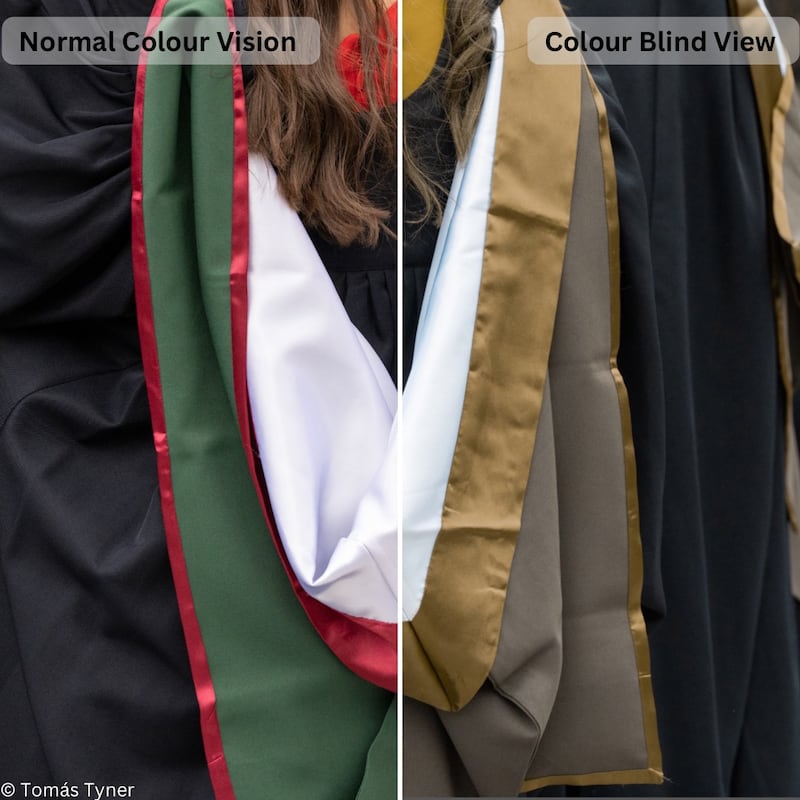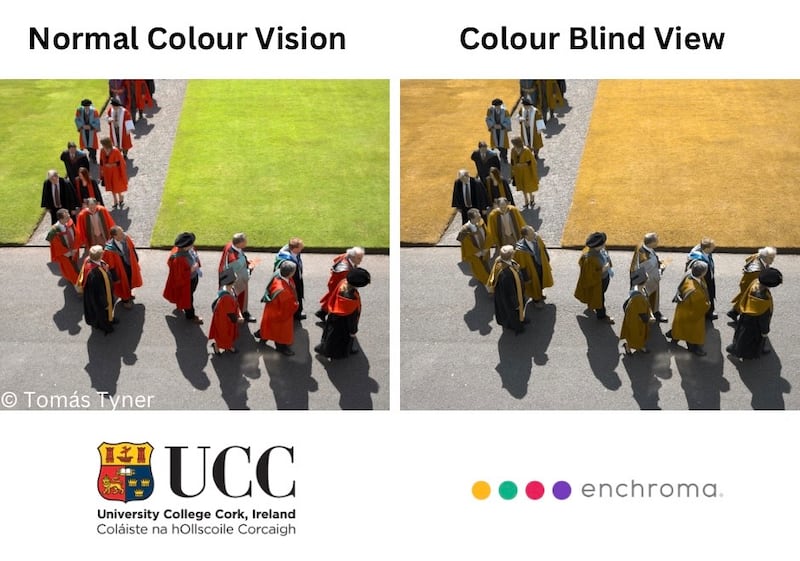University College Cork (UCC) students and staff with colour blindness will have access to glasses that can help them with work and learning material for which colours are involved.
The initiative comes from UCC’s partnership with EnChroma, a Californian creator of glasses specific to colour blindness, who contacted UCC philosophy lecturer Dr Joel Walmsley as he extensively researched and wrote about this condition.
The glasses will be available to borrow from the Boole Library from Wednesday, September 6th, International Colour Blind Awareness Day, and staff will receive guidance on how to adapt learning materials to accommodate those who are colour blind as part of the project.
“One in 12 men and one in 200 women suffer from some form of colour vision deficiency (CVD),” said Dr Walmsley. “With a student population of 24,000, roughly 1,000 UCC students would be expected to have some form of it.”
READ MORE

In his first year philosophy class, he gets to know about 300 students and as they discuss perception and vision, he often comes across “a handful of students” who have some form of colour blindness “but just didn’t know about it”, he explained.
“It shows how in Ireland, colour blindness recognition is neglected and not enough widely discussed. This initiative will provide those students with an extra set of tools, and hopefully raise more awareness among people who have a normal colour vision too.”

As people with CVD only see about 10 per cent of all hues and shades, they can often feel frustrated and confused when trying to understand colourful information. Learning materials such as maps where regions are distinguished by colour, or graphs and charts on presentations, could be hard to decode. Dr Walmsley also highlights everyday experiences such as not being able to wire the right plug at home or to distinguish sports teams wearing similar colours when watching a match.
Common colour confusions include green and yellow, grey and pink, purple and blue, and red and brown, and overall, colours can appear “muted”, “dull” and “hard to tell apart”, he explained.
The glasses provided by EnChroma have special optical filters that can make an expanded range of colours more “vibrant, clear and distinct”, but according to Dr Walmsley, the initiative could have wider positive consequences. “If there’s more awareness around it, people who are not affected by CVD could also take simple steps such as labelling information with words besides colours, or just choose different colours.”













